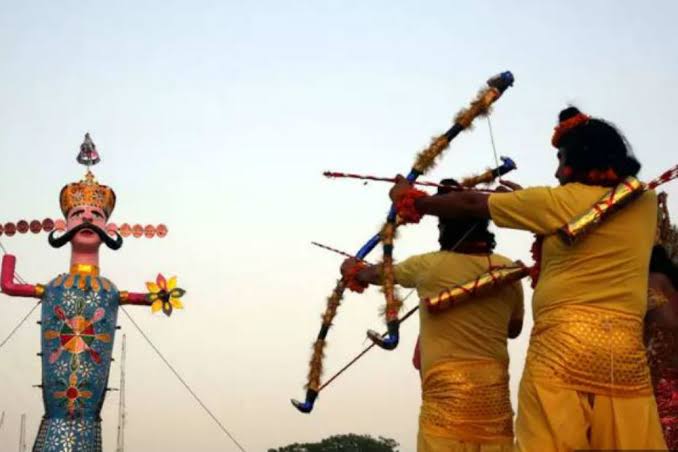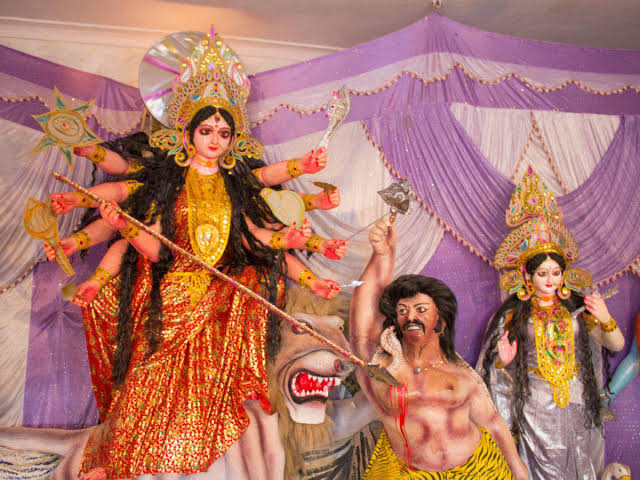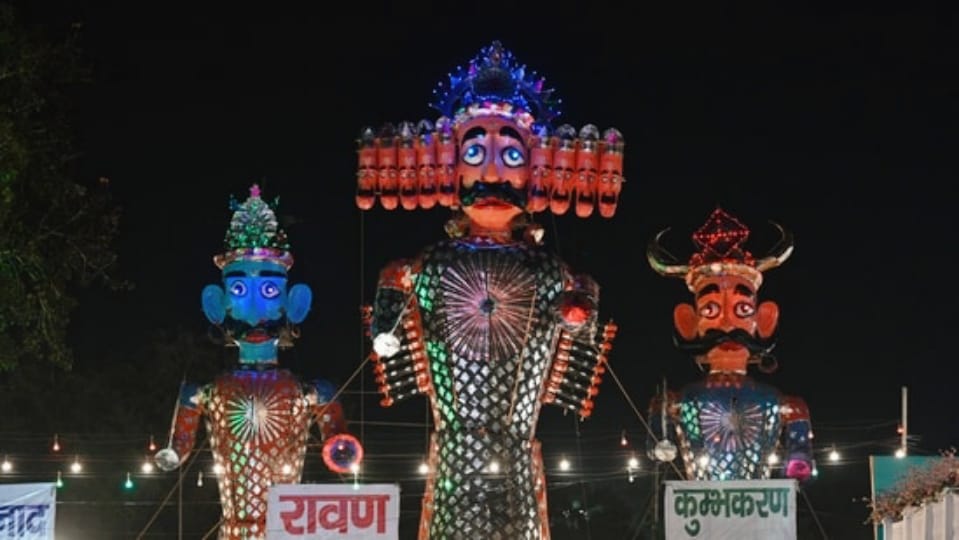Dussehra, also known as Vijayadashami, is celebrated on the tenth day of Navratri and holds profound significance in Hindu mythology. This day commemorates two pivotal events: Lord Rama’s victory over the demon king Ravana and goddess Durga’s triumph over the buffalo demon Mahishasura. The name Vijayadashami translates to “victory on the tenth day,” symbolizing the ultimate victory of good over evil.
Across the country, Dussehra infuses homes and workplaces with festive decor and a sense of joy. For many Hindus, it serves as an auspicious occasion to embark on new ventures, making significant purchases ranging from vehicles to machinery.
In 2024, Dussehra will be celebrated on October 12. The Dashami tithi (lunar day) will begin at 10:58 AM on October 12 and end at 9:08 AM on October 13 (IST). The auspicious time for the Pujan (Aparahna) is between 1:16 PM and 3:35 PM, while the Vijay Muhurat will be from 2:03 PM to 2:49 PM.

Regional Celebrations: A Kaleidoscope of Traditions
Dussehra is marked by diverse celebrations across India, each reflecting local customs and cultural nuances:
- Delhi: The capital comes alive with ten days of Ramlila, theatrical performances depicting the Ramayana. The festivities culminate in the burning of effigies of Ravana, symbolizing the destruction of evil.
- Maharashtra: The tradition of exchanging Apte leaves, fondly referred to as “gold leaves,” follows the Ravana Dahan. This gesture symbolizes sharing Kubera’s treasures based on another epic episode from the Ramayana.
- Karnataka: In Mysore, Dussehra transforms into a grand carnival, featuring concerts, processions, and a vibrant showcase of cultural heritage, drawing visitors from far and wide.
- Chhattisgarh: The festival takes on a unique flavor as people worship nature, celebrating their motherland amidst the region’s rich flora and fauna.
- West Bengal: The festivities coincide with Durga Puja, a grand celebration of the goddess’s victory, highlighting her strength and resilience.
Read this also: Embrace Maa Katyayani on Shashthi: Your Path to a Fulfilling Life
The Astrological Significance of Dussehra
Dussehra, or Vijayadashami, is not only rich in mythological and cultural significance but also carries profound astrological meaning. The timing of this festival aligns with specific celestial phenomena, making it an auspicious occasion for personal and spiritual growth.
Tithi and Nakshatra
Dussehra falls on the tenth day (Dashami) of the lunar month of Ashwin, coinciding with the waxing moon. This tithi is considered particularly favorable for new beginnings, decision-making, and setting intentions. Astrologically, it is believed that the energy of the moon enhances emotional stability and clarity during this period.

The day often aligns with specific nakshatras (lunar constellations), such as Ashwini, which are associated with healing, rejuvenation, and prosperity. These nakshatras amplify the festival’s energy, encouraging individuals to focus on self-improvement and spiritual pursuits.
Climate and Astronomy
Dussehra typically occurs during the transition from the monsoon to the winter season in India. This climatic shift represents a time of renewal and harvest, symbolizing abundance and prosperity. The cooler weather and clear skies enhance mood and well-being, providing a sense of freshness and vitality.
Read this also: Navratri 2024: Worshipping the Nine Forms of Maa Durga, Rituals, and Celebrations
Dussehra’s Positive Effects on Human Well-Being
The conjunction of these astrological factors can positively impact mental and physical well-being. The energy of Dussehra promotes optimism, motivation, and a sense of purpose. Engaging in traditional practices such as worship, community gatherings, and festive celebrations can boost emotional health, foster connections, and alleviate stress.

Furthermore, the symbolic act of burning effigies during Dussehra serves as a powerful psychological release, allowing individuals to let go of negativity and embrace a fresh start. This ritual aligns with the brain’s natural inclination toward catharsis and renewal, enhancing overall well-being.
Rama and Ravana
In the mythological tale of the Ramayana, both Rama and Ravana possessed extraordinary abilities, yet their choices defined their paths. Rama’s adherence to truth and righteousness elevated him to divine status, while Ravana’s ego and malice led to his downfall. Dussehra provides a framework for personal transformation, encouraging individuals to convert their negative traits into positive virtues.
Read this also: 10 Dreamy Hill Stations in India You Must Visit This Winter – #9 Will Take Your Breath Away!
Conclusion
Dussehra is more than just a festival; it is an opportunity for self-reflection and renewal. As we celebrate this vibrant occasion, we are reminded to conquer our inner demons and strive for goodness, fostering a collective spirit of positivity that can uplift communities and enrich lives. Through the lessons of Dussehra, we embrace the journey from darkness to light, ensuring that the essence of goodness prevails in our lives.









[…] Read this also: Dussehra: Celebrating Victory and Renewal in Hindu Tradition […]